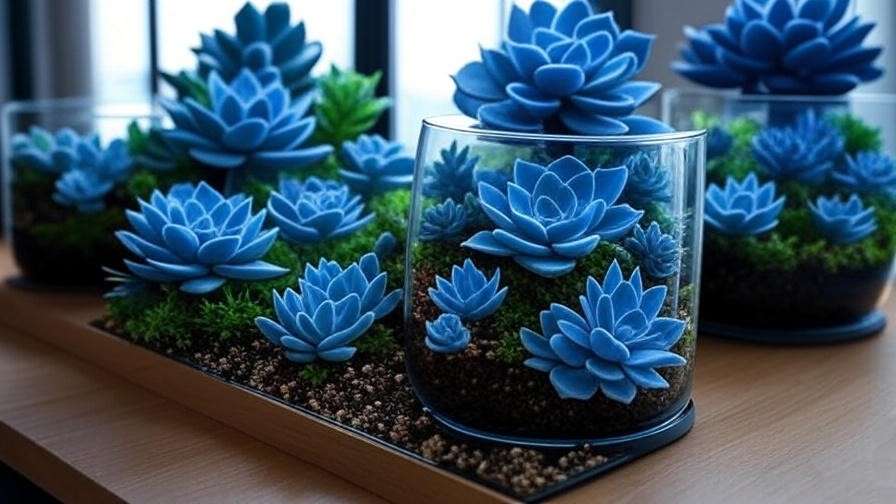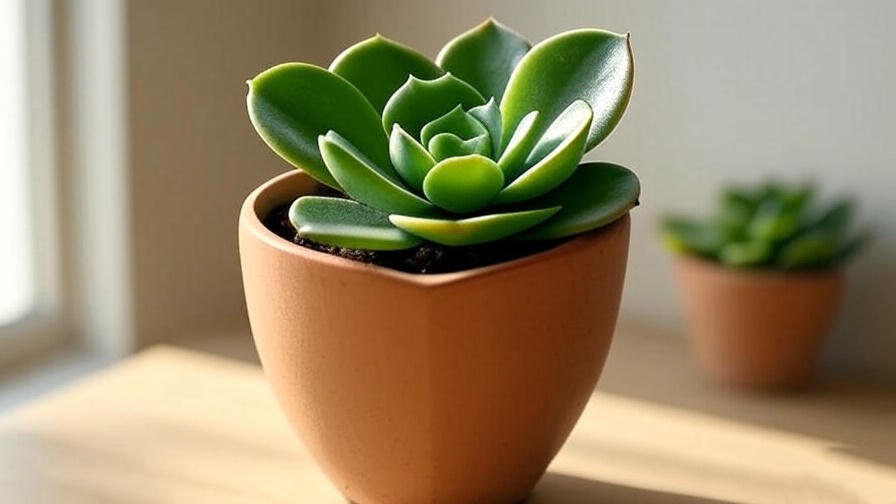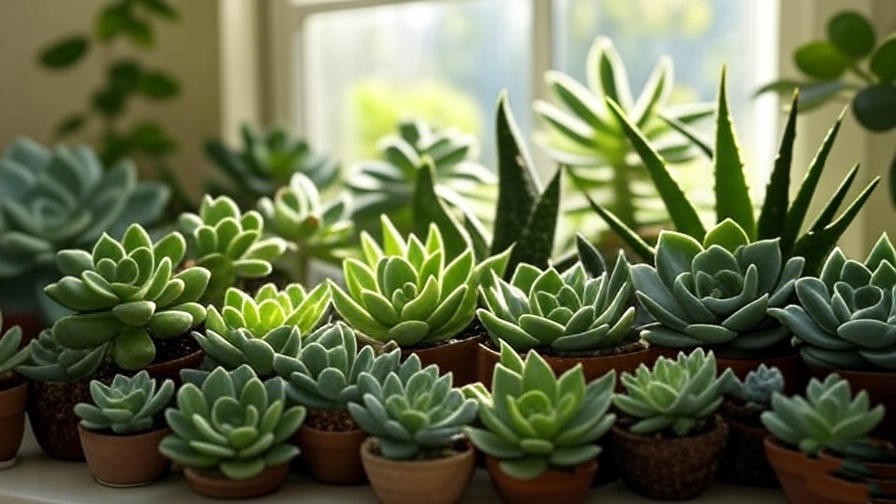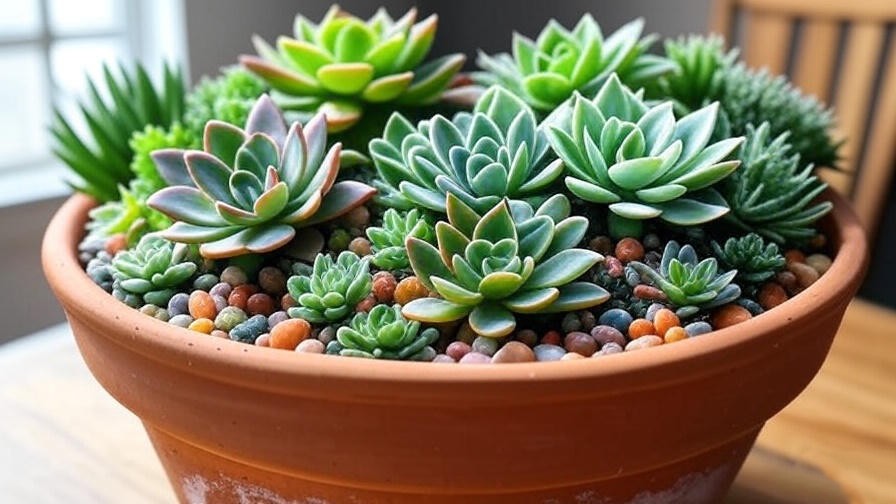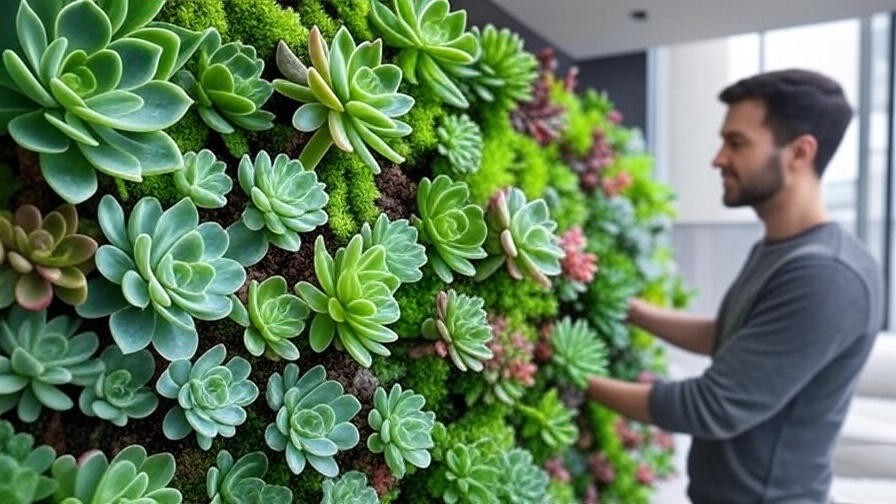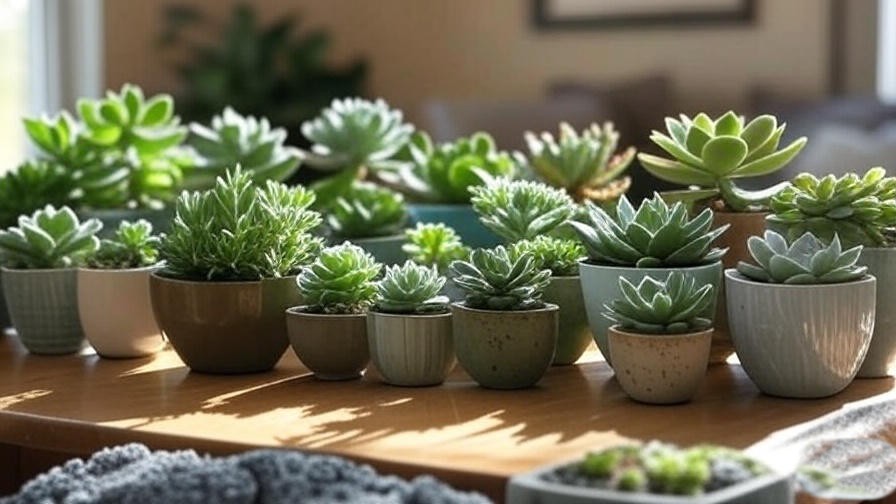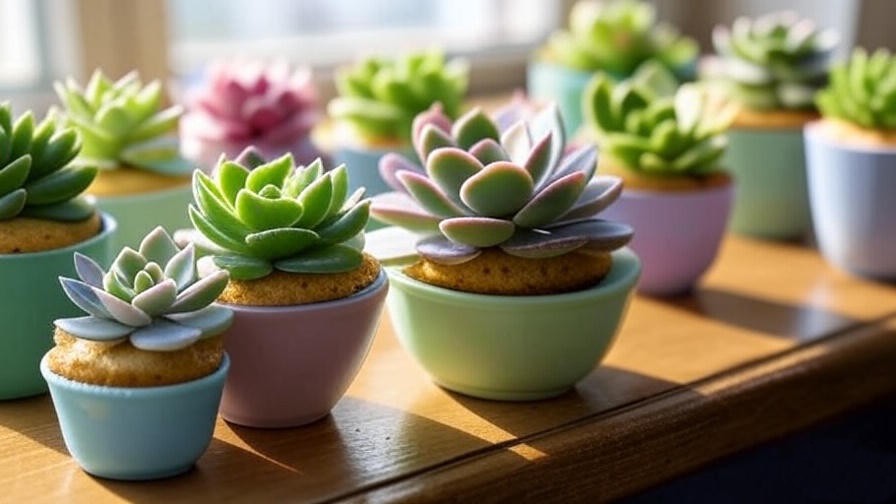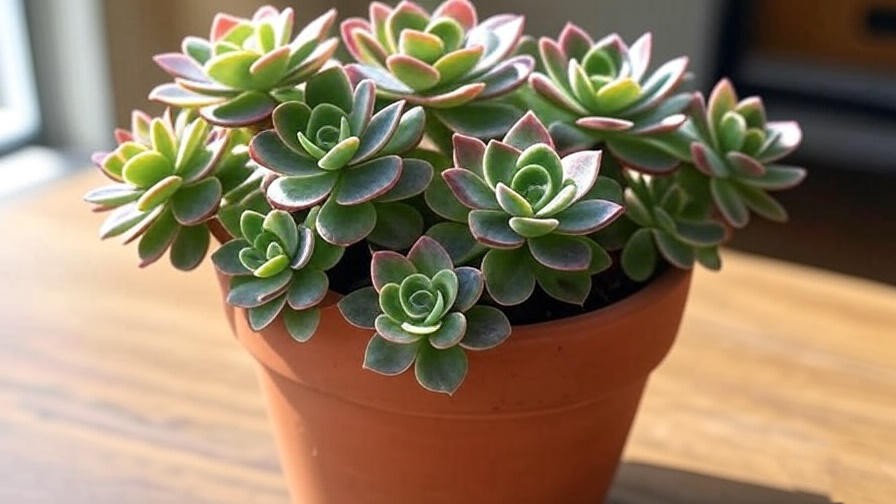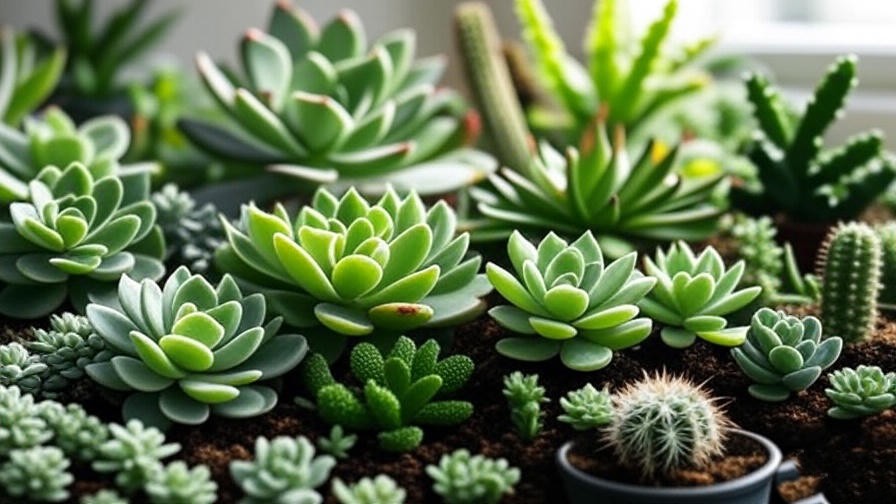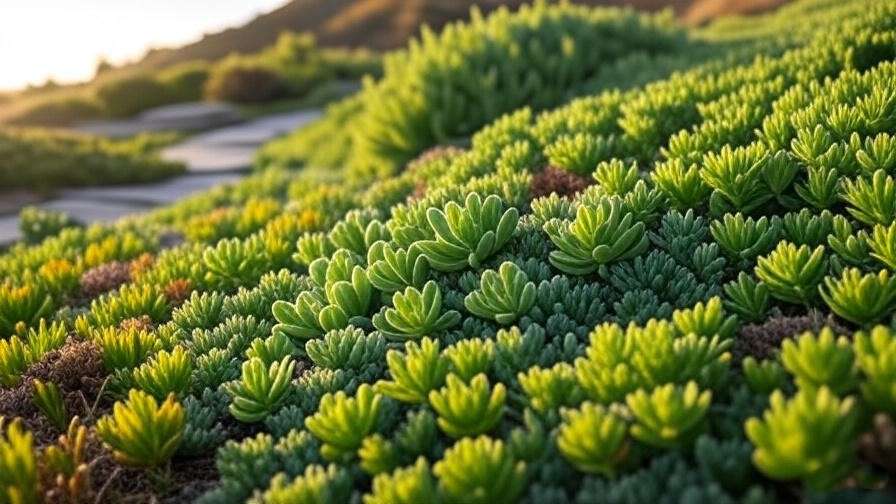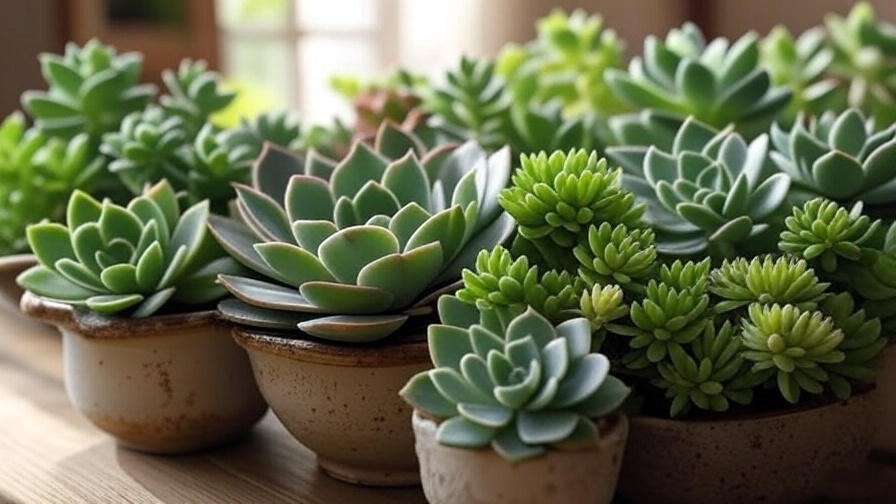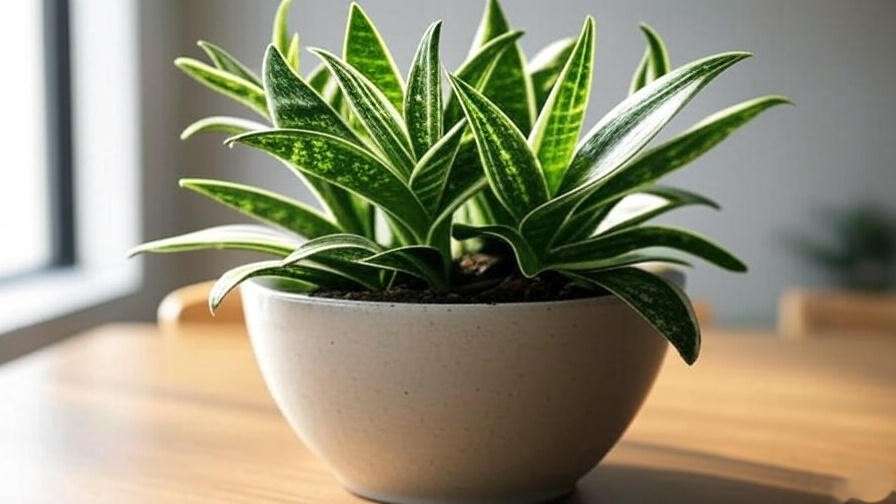Picture this: a cluster of vibrant blue succulents glowing softly on your windowsill, their cool hues transforming your space into a serene oasis. These striking plants, with their otherworldly shades of turquoise and sapphire, are more than just decor—they’re low-maintenance companions that purify the air and soothe the soul. As a horticulturist with over 15 years of experience cultivating rare succulents in urban settings, I’ve witnessed the magic of blue succulents in countless homes, from cozy apartments to sprawling lofts. But keeping their vivid colors and plump leaves thriving indoors can be tricky without the right know-how. In this guide, we’ll explore expert care tips to ensure your blue succulents flourish, tackling common pitfalls like fading colors or overwatering with practical, science-backed solutions. Whether you’re a beginner or a seasoned plant parent, you’ll find everything you need to create a thriving indoor succulent garden.
Research from the University of Kansas (2018) shows that indoor plants like succulents can reduce stress by up to 15% and improve air quality by filtering toxins. Blue succulents, with their compact size and forgiving nature, are perfect for busy urban dwellers. Let’s dive into their unique charm, top varieties, and foolproof care strategies to keep them vibrant year-round.
What Are Blue Succulents? Understanding Their Unique Charm
Blue succulents are a captivating group of drought-tolerant plants known for their striking blue, teal, or powdery aqua foliage. Their color comes from a waxy coating called pruinose or pigments like anthocyanins, which protect them from harsh sunlight and dehydration. According to the Royal Horticultural Society, these adaptations make them ideal for indoor environments where light and humidity fluctuate.
The Science Behind the Blue Hue
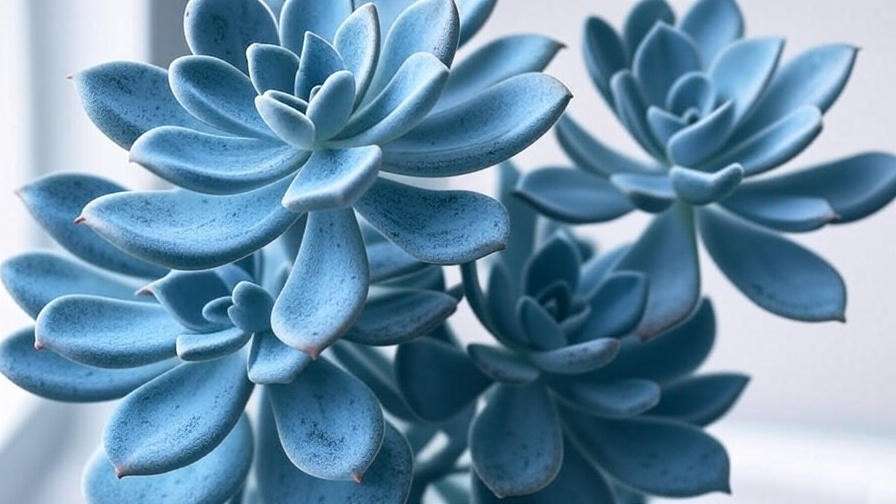
The blue hue in succulents results from a combination of genetics and environmental factors. Anthocyanins, the same pigments that color blueberries, react to light and temperature, intensifying under bright, indirect sunlight. For example, insufficient light can cause a Senecio serpens to lose its chalky blue tone, turning dull green. Understanding this interplay is key to maintaining their vibrancy indoors.
Why Choose Blue Succulents for Indoor Spaces?
Blue succulents are a favorite for indoor gardeners due to their:
- Adaptability: They thrive in low to moderate light, perfect for apartments.
- Aesthetic Appeal: Their cool tones complement modern decor, from minimalist to bohemian.
- Low Maintenance: They require less frequent watering than tropical houseplants.
- Therapeutic Benefits: Studies, like one from the Journal of Environmental Psychology (2020), link plant care to reduced anxiety.
Pros and Cons:
- Pros: Compact size, drought tolerance, air-purifying qualities.
- Cons: Susceptible to overwatering, may fade without proper light.
Top Blue Succulent Varieties Perfect for Indoor Growing
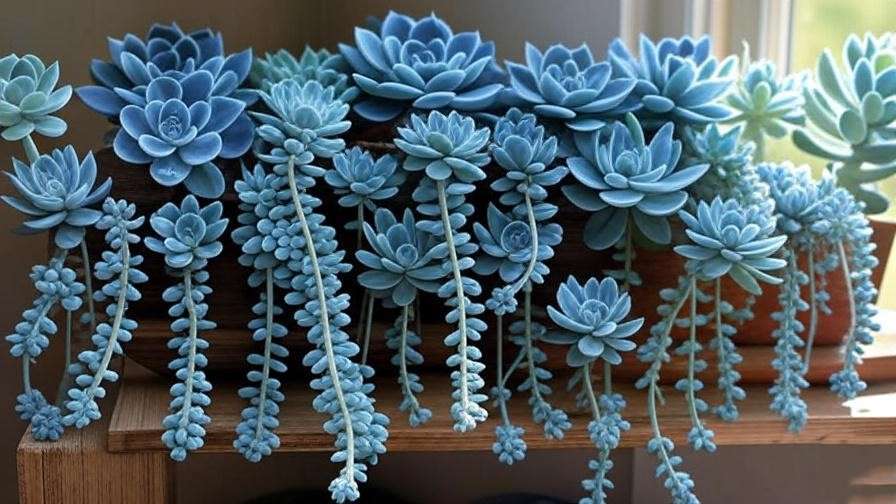
Choosing the right variety is the first step to success. Below are the best blue succulents for indoor spaces, each with unique traits and care needs.
Echeveria ‘Blue Atoll’ – The Compact Beauty
Echeveria ‘Blue Atoll’ forms tight, rosette-shaped clusters with powdery blue-green leaves. Its compact size (4-6 inches wide) makes it ideal for small spaces like desks or windowsills. This beginner-friendly variety thrives in bright, indirect light and needs watering only every 10-14 days. Its leaves blush pink under stress, adding visual interest.
Sedum ‘Blue Elf’ – A Hardy Trailing Option
Sedum ‘Blue Elf’ is a hybrid with blue-gray, needle-like leaves that trail beautifully over pot edges. Perfect for hanging baskets, it tolerates lower light than most succulents and requires watering every 2-3 weeks. Its drought tolerance makes it forgiving for forgetful plant parents.
Pachyveria ‘Blue Pearl’ – The Rosette Wonder
This hybrid combines the best of Pachyphytum and Echeveria, boasting plump, pearl-like leaves in a soft blue hue. It grows to 8 inches and prefers bright, filtered light. To maintain its sheen, dust leaves gently with a soft brush. I’ve used ‘Blue Pearl’ in terrariums, where its reflective surface sparkles under LED lights.
Senecio ‘Blue Chalksticks’ – The Upright Accent Plant
Senecio serpens, or ‘Blue Chalksticks,’ has upright, cylindrical leaves coated in a powdery blue film. It’s perfect for adding height to arrangements and propagates easily from cuttings. Place it near a south-facing window for best color retention.
Additional Rare Picks
- Agave ‘Blue Glow’: A dramatic, slow-growing agave with blue-green leaves edged in red.
- Graptopetalum ‘Bluebell’: Ghostly blue rosettes that thrive in bright light.
- Kalanchoe ‘Blue Surprise’: Compact with scalloped, blue-tinted leaves.
| Variety | Size | Light Needs | Watering Frequency | Best For |
|---|---|---|---|---|
| Echeveria ‘Blue Atoll’ | 4-6 inches | Bright, indirect | Every 10-14 days | Beginners, small spaces |
| Sedum ‘Blue Elf’ | 6-12 inches | Moderate to bright | Every 2-3 weeks | Hanging baskets |
| Pachyveria ‘Blue Pearl’ | 6-8 inches | Bright, filtered | Every 10-14 days | Terrariums |
| Senecio ‘Blue Chalksticks’ | 12-18 inches | Bright, direct | Every 2-3 weeks | Vertical accents |
Essential Care Tips: Mastering the Basics for Healthy Growth
To keep your blue succulents thriving, follow these expert-backed care strategies tailored for indoor environments.
Optimal Lighting for Vibrant Blue Coloration
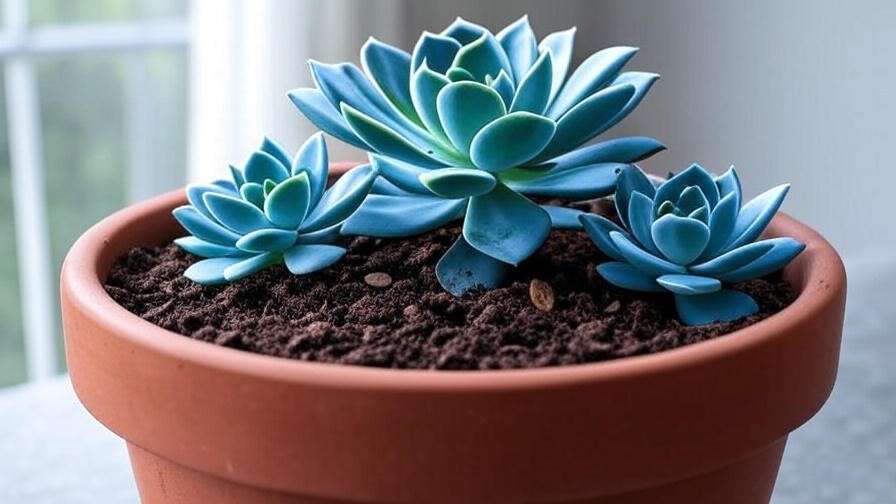
Blue succulents need 4-6 hours of bright, indirect light daily to maintain their color. Place them near east or west-facing windows, or use full-spectrum grow lights (10,000 lux) for low-light spaces. Rotate pots weekly to prevent stretching (etiolation), a common issue I’ve corrected in clients’ homes by adjusting light exposure.
Pro Tip: If leaves elongate or lose color, move the plant closer to a light source gradually to avoid shock.
Watering Techniques to Avoid Root Rot
Overwatering is the top killer of succulents. Use the “soak and dry” method: water thoroughly until it drains from the pot’s holes, then wait until the soil is completely dry (typically 10-14 days). In winter, reduce to every 3-4 weeks. A moisture meter can help beginners gauge dryness.
Step-by-Step Watering:
- Check soil dryness with a finger 1 inch deep.
- Use room-temperature water, ideally rainwater or distilled.
- Pour slowly until water exits drainage holes.
- Empty saucers to prevent standing water.
Choosing the Right Soil and Pots
Blue succulents need well-draining soil to prevent rot. Mix 50% potting soil, 30% perlite, and 20% coarse sand for optimal drainage. Terra cotta pots are ideal for their breathability, but ceramic works if drainage holes are present. Ensure pots are 10-20% larger than the plant’s root ball.
DIY Soil Recipe:
- 2 parts standard potting soil
- 1 part perlite
- 1 part coarse sand or pumice
Temperature and Humidity Control Indoors
Maintain temperatures between 50-80°F (10-27°C). Avoid placing succulents near drafts or heating vents, which can cause leaf drop. Most blue succulents prefer low humidity (30-50%), typical of indoor settings. For dry climates, a pebble tray with water beneath the pot can boost local humidity.
Fertilizing for Long-Term Vitality
Feed blue succulents with a diluted (1:4) organic cactus fertilizer (e.g., 5-10-10 NPK) every 4-6 weeks during spring and summer. Avoid fertilizing in winter when growth slows. Overfertilizing can burn roots, so always dilute more than recommended.
Pruning, Repotting, and General Maintenance
Prune dead or yellowing leaves with sterilized scissors to prevent disease. Repot every 2-3 years in spring, using fresh soil to refresh nutrients. Gently shake off old soil and inspect roots for rot before repotting.
Checklist for Repotting:
- Choose a pot with drainage holes.
- Fill with fresh succulent mix.
- Position the plant at the same depth as before.
- Water lightly after 3-5 days to settle roots.
Troubleshooting Common Issues: Keeping Your Blue Succulents Problem-Free
Even with proper care, issues can arise. Here’s how to address them effectively.
Identifying and Treating Pests Like Mealybugs and Aphids
Mealybugs appear as white, cottony masses, while aphids cluster on new growth. Treat with a neem oil solution (1 tsp neem oil, 1 quart water) sprayed weekly for 2-3 weeks. Isolate affected plants to prevent spread.
Prevention Tips:
- Inspect new plants before adding them to your collection.
- Maintain good air circulation around pots.
Combating Fungal Diseases and Rot
Fungal issues, like black stem rot, stem from overwatering or poor ventilation. Cut away affected areas with a sterile knife and apply cinnamon powder as a natural antifungal. Ensure soil dries completely between waterings.
Addressing Color Fading and Leaf Drop
Fading colors often signal insufficient light or nutrient imbalance. Move the plant to a brighter spot or supplement with grow lights. Leaf drop may indicate overwatering or temperature stress—check soil moisture and stabilize conditions.
Why Is My Blue Succulent Turning Green?
- Cause: Low light reduces anthocyanin production.
- Fix: Increase light exposure gradually over 1-2 weeks.
Overwatering vs. Underwatering: Key Signs and Fixes
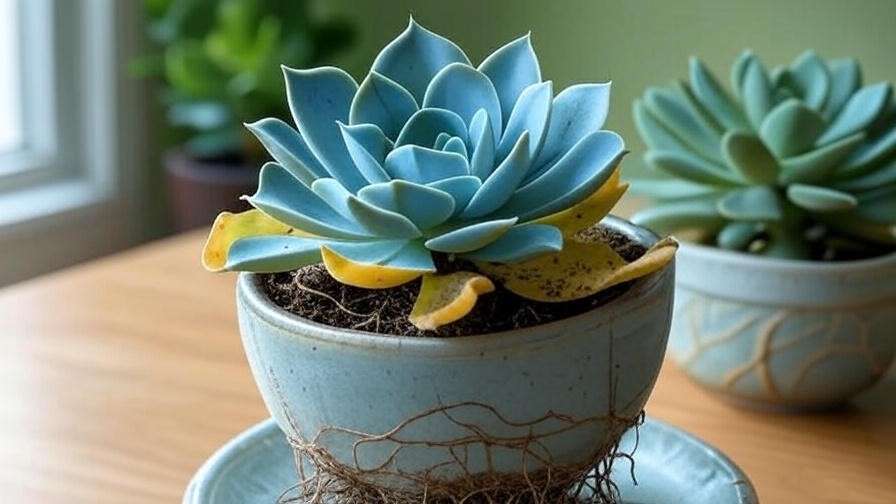
- Overwatering: Soft, mushy leaves; blackened roots. Fix by reducing watering and repotting in dry soil.
- Underwatering: Wrinkled, shriveled leaves. Water thoroughly and resume regular care.
Propagation Secrets: Multiplying Your Blue Succulent Collection
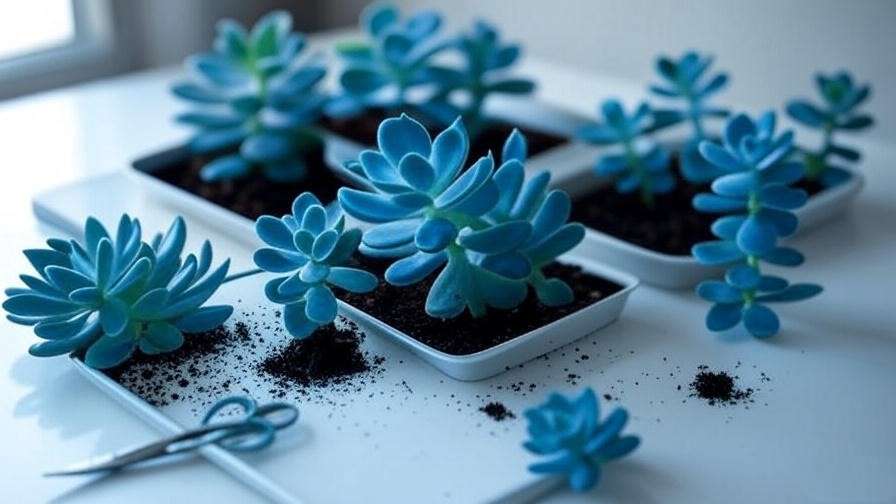
Propagating blue succulents is a rewarding way to expand your collection or share plants with friends. With the right techniques, you can grow new plants from cuttings, offsets, or even seeds. Below are the most effective methods, drawn from my years of propagating rare succulents for clients and personal projects.
Leaf and Stem Cuttings – The Easiest Methods
Leaf and stem cuttings are beginner-friendly and work well for most blue succulents, like Echeveria ‘Blue Atoll’ and Sedum ‘Blue Elf’.
Steps for Leaf Cuttings:
- Gently twist a healthy, plump leaf from the base, ensuring a clean break.
- Let the leaf callus over for 2-3 days in a dry, shaded spot to prevent rot.
- Place the callused leaf on well-draining soil, misting lightly every 3-4 days.
- Roots and a new rosette should form within 2-4 weeks.
Steps for Stem Cuttings:
- Cut a 2-3 inch stem with sterile scissors, just below a node.
- Allow the cutting to callus for 1-2 days.
- Plant in a succulent mix and water sparingly until roots develop (about 2 weeks).
Success Rate: Leaf cuttings succeed 80-90% of the time with proper care, while stem cuttings are closer to 95%. I’ve propagated dozens of Senecio ‘Blue Chalksticks’ this way, creating lush displays for clients’ offices.
Offsets and Division for Quick Results
Offsets, or “pups,” are small plants that grow at the base of varieties like Pachyveria ‘Blue Pearl’. Dividing these is quick and reliable.
How to Divide Offsets:
- Gently separate the offset from the mother plant using a clean knife.
- Ensure the offset has some roots attached.
- Plant in a small pot with succulent soil and water lightly after 3 days.
- Place in bright, indirect light for 1-2 weeks to establish.
Offsets typically root within 10-14 days, making this method ideal for quick results. I’ve used this technique to create multi-plant arrangements for urban gardeners with limited space.
Seed Propagation for Advanced Growers
Growing blue succulents from seeds is challenging but rewarding for rare varieties like Agave ‘Blue Glow’. It requires patience due to slow germination (2-6 weeks) and inconsistent success rates (50-70%).
Seed Propagation Tips:
- Use a sterile seed-starting mix (50% sand, 50% peat moss).
- Scatter seeds lightly, covering with a thin layer of sand.
- Keep soil consistently moist but not soggy, using a spray bottle.
- Place in a warm (70-75°F), bright location with indirect light.
Seasonal Care Adjustments: Year-Round Success Indoors
Blue succulents’ needs shift with the seasons, even indoors. Adjusting care ensures they stay healthy year-round.
Winter Dormancy Strategies
Most blue succulents enter a dormant phase in winter, slowing growth. Reduce watering to every 3-4 weeks and move plants away from cold drafts or windowsills where temperatures drop below 50°F. If using grow lights, cut back to 4 hours daily to mimic shorter daylight.
Winter Tip: I’ve found that placing a small space heater 3-4 feet away helps maintain stable temperatures for sensitive varieties like Pachyveria ‘Blue Pearl’.
Summer Growth Boosts
Summer is the active growth period. Increase watering to every 10-14 days and provide 6-8 hours of bright, indirect light. Watch for heat stress in rooms above 80°F—use fans to improve air circulation.
Summer Hack: Mist plants lightly in the morning to combat dry indoor air from air conditioning, a trick I’ve used to keep Echeveria ‘Blue Atoll’ plump during heatwaves.
Transitioning Between Seasons
Gradual changes prevent shock. Over 1-2 weeks, slowly adjust watering and light exposure when transitioning from winter to spring or summer to fall. For example, increase light by 30 minutes daily to avoid sunburn.
Seasonal Care Calendar:
| Season | Watering | Light | Temperature |
|---|---|---|---|
| Winter | Every 3-4 weeks | 4-6 hours, indirect | 50-65°F |
| Spring | Every 2 weeks | 6-8 hours, bright | 60-75°F |
| Summer | Every 10-14 days | 6-8 hours, bright | 65-80°F |
| Fall | Every 2-3 weeks | 5-7 hours, indirect | 60-75°F |
Creative Indoor Display Ideas: Styling Blue Succulents in Your Space
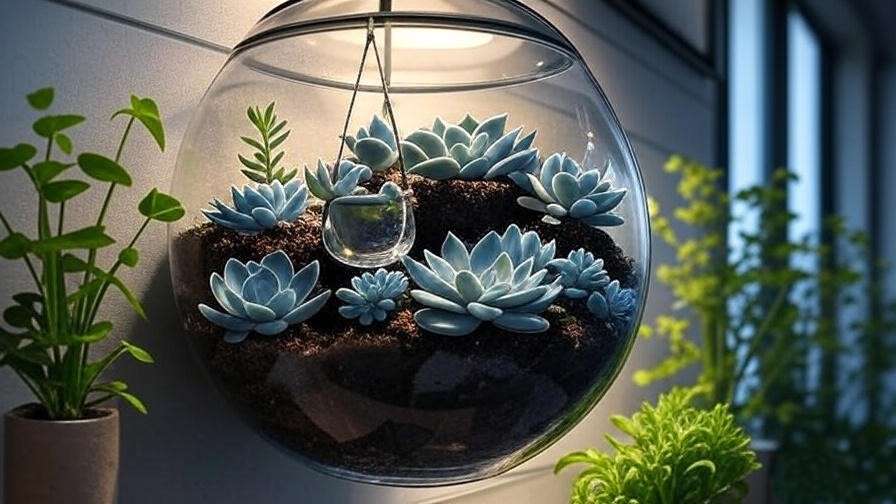
Blue succulents are as decorative as they are resilient. Here are creative ways to showcase them indoors.
Terrariums and Dish Gardens
Glass terrariums highlight the reflective quality of blue succulents. Combine Pachyveria ‘Blue Pearl’ with colored pebbles for a coastal vibe. Use open terrariums to ensure airflow and prevent rot.
DIY Terrarium Guide:
- Choose a 6-8 inch glass container with an open top.
- Layer 1 inch of gravel, followed by succulent soil.
- Arrange 2-3 small blue succulents, leaving space for growth.
- Add decorative elements like driftwood or shells.
Vertical Walls and Hanging Planters
For small spaces, mount Sedum ‘Blue Elf’ in wall planters or hang Senecio ‘Blue Chalksticks’ in macramé baskets. These setups maximize vertical space and add texture to minimalist rooms.
Space-Saving Idea: I created a living wall for a client’s studio apartment using a wooden frame and mesh pockets, filled with blue succulents for a stunning focal point.
Pairing with Other Plants
Contrast blue succulents with green varieties like Haworthia or red-tipped Echeveria ‘Black Prince’ for visual impact. Group in odd numbers (3 or 5) for aesthetic balance, a principle rooted in design theory.
Display Inspiration: A trio of Echeveria ‘Blue Atoll’, Aloe vera, and Crassula ovata on a tiered stand can elevate a living room corner, as I’ve done for several clients.
Frequently Asked Questions (FAQs)
Are blue succulents real or dyed?
Blue succulents are naturally colored due to pigments and waxy coatings, not dyes. Varieties like Senecio serpens develop their hue through genetics and light exposure.
How often should I water my indoor blue succulents?
Water every 10-14 days in spring/summer, ensuring soil dries completely. In winter, reduce to every 3-4 weeks to prevent rot.
Can blue succulents survive in low light?
They tolerate low light but may lose vibrancy. Supplement with grow lights (10,000 lux) for 4-6 hours daily to maintain color.
What’s the best soil mix for blue succulents?
Use a mix of 50% potting soil, 30% perlite, and 20% coarse sand for optimal drainage.
Why are my blue succulent leaves wrinkling?
Wrinkling indicates underwatering. Water thoroughly and check soil drainage to ensure roots are healthy.
How do I propagate blue succulents?
Use leaf or stem cuttings, letting them callus for 1-3 days before planting in well-draining soil. Roots form in 2-4 weeks.
Can I grow blue succulents in a bathroom?
Yes, if humidity is managed (below 50%) and light is adequate. Varieties like Sedum ‘Blue Elf’ tolerate moderate humidity.
Why is my blue succulent stretching?
Stretching (etiolation) results from insufficient light. Move to a brighter spot or use grow lights to correct growth.
Conclusion: Elevate Your Indoor Oasis with Blue Succulents
Blue succulents are more than plants—they’re living art that brings tranquility and style to any home. By mastering light, water, and soil needs, you can keep varieties like Echeveria ‘Blue Atoll’ and Pachyveria ‘Blue Pearl’ thriving year-round. Start with one variety, experiment with propagation, and watch your collection grow. For more tips, check out our guides on succulent propagation or indoor plant styling. Have a favorite blue succulent? Share your experience in the comments below!

